In November 2011, German biologist Stefan Lanka publicly issued a bold challenge. He offered the hefty sum of 100,000 Euros to anyone who could prove the existence of the measles virus.
German Biologist Stefan Lanka Bet €100,000 the Measles Virus Doesn’t Exist. He Won. The true story behind Lanka's famous bet, which the mainstream is trying to hide.
German Biologist Stefan Lanka Bet €100,000 the Measles Virus Doesn’t Exist. He Won. (substack.com)
‘A 2021 Cochrane review claimed “Vaccine effectiveness in preventing measles was 95% after one dose … and 96% after two doses.”
Sounds impressive, until you realize none of the 7 studies they used to attain this figure were RCTs - they were all unblinded, uncontrolled epidemiological studies.’
Colpo:
‘Unlike the fake challenges issued by lying grifter Steve Kirsch, this was a genuine challenge with some pretty simple criteria.’
"The reward will be paid, if a scientific publication is presented, in which the virus is not only asserted, but also proven and in which, among other things, the diameter of measles virus is determined." (Bold emphasis added)’
'In November 2011, German biologist Stefan Lanka publicly issued a bold challenge. He offered the hefty sum of 100,000 Euros to anyone who could prove the existence of the measles virus.
Lanka was inspired to issue the challenge after witnessing an intense and sustained propaganda campaign that year by both the World Health Organization and the German government, urging people to get vaccinated against measles.
Unlike the fake challenges issued by lying grifter Steve Kirsch, this was a genuine challenge with some pretty simple criteria.
"The reward will be paid, if a scientific publication is presented, in which the virus is not only asserted, but also proven and in which, among other things, the diameter of measles virus is determined." (Bold emphasis added)
Billions of doses of measles vaccines have been administered since their introduction in the early 1960s. Authorities constantly admonish the importance of measles vaccination, and whenever a measles ‘outbreak’ occurs it is invariably blamed upon unvaccinated folk.
The existence of a measles virus, therefore, is presented as a given. Which means Lanka should have been flooded with offers to take up his challenge.
After all, who could resist the opportunity to legally score a quick and easy €100,000?
Turns out proving the existence of a measles virus isn’t so easy.
There was only one response to Stefan’s challenge. Not from one of the world’s countless virologists or microbiologists, or vocal health authorities, but from a bright-eyed medical student called David Bardens.
On January 16, 2012, Bardens emailed Lanka and asked if the challenge was still current. Lanka replied in the affirmative.
On January 31, 2012, a cocksure Bardens replied with the following message:
“With the detailed compilation of literature attached I have given you both the proof of the existence of the measles virus and the required images and information on the diameter of the measles virus.
Please transfer the amount of € 100,000 to the following account [...]
I would like to thank you for the opportunity to acquire such a relatively big amount of money with such a relatively little effort.
With best regards,
David Bardens”
The literature tendered by Bardens as ‘proof’ of the existence of the measles virus consisted of the following titles, which will herein be referred to as “The Bardens Six”:
Enders JF, Peebles TC. Propagation in tissue cultures of cytopathogenic agents from patients with measles. Proceedings of the Society for Experimental Biology and Medicine, 1954 Jun; 86 (2): 277–286.
Bech V, Magnus PV. Studies on measles virus in monkey kidney tissue cultures. Acta Pathologica et Microbiologica Scandinavica, 1959; 42 (1): 75–85.
Nakai M, Imagawa DT. Electron microscopy of measles virus replication. Journal of Virology, 1969 Feb; 3 (2): 187–197.
Lund GA, et al. The molecular length of measles virus RNA and the structural organization of measles nucleocapsids. Journal of General Virology, 1984 Sep; 65 (Pt 9): 1535–1542.
Horikami SM, Moyer SA. Structure, Transcription, and Replication of Measles Virus. Current Topics in Microbiology and Immunology, 1995; 191: 35–50.
Daikoku E, et al. Analysis of Morphology and Infectivity of Measles Virus Particles. Bulletin of the Osaka Medical College, 2007; 53 (2): 107–114.
Sorry, But I Asked for “Proof”
Lanka replied to Bardens - correctly - that the studies did not meet the requirements. They did not prove the existence of the measles virus.
Bardens, not understanding the difference between a dubious claim and valid scientific proof, promptly sued Lanka for non-payment.
When the case was heard, the court’s medico-legal ‘expert’ was Andreas Podbielsky, from the University of Rostock.
Podbielsky just happened to be … a virologist.
This was like calling an astrologist to give ‘expert’ testimony on the validity of horoscopes.
Little surprise that, on March 12, 2015, the court ruled in Bardens’ favour. Lanka was ordered to pay Bardens the €100,000.
Incredibly, the court made this decision despite Podbielsky admitting that none of The Bardens Six reported the results of any control procedures.
The 2015 ruling is the part of the story the mainstream media want you to hear, and fell all over themselves to report.
"A vaccine denier bet $100,000 the measles virus 'doesn't exist.'. He lost," trumpeted the Los Angeles Times. The LA Times article relied heavily on ad hominem attack to portray Lanka as a screwball. According to uber-snide LA Times writer Michael Hiltzik, Lanka had "a long history of pseudoscientific outbursts," was prone to "denial" and “pure publicity stunts," and was allegedly the latest of "cranks blowing up their own case in court."
Having tripped over itself to ridicule Lanka, the glorified trash rag that is the LA Times was too embarrassed and no doubt too compromised to ever report on what subsequently transpired.
Ditto for the hordes of other outlets that gleefully reported the original decision, but suddenly suffered a monumental case of writer’s block when it came to reporting what happened next.
Lanka, you see, promptly appealed the decision. The case was then heard by the Higher Regional Court (Oberlandesgericht) Stuttgart on February 16, 2016. After reviewing The Bardens Six, the court agreed they failed to meet the contest requirements as set by Lanka. The criteria stipulated a single publication that both proved the existence of the measles virus and measured its diameter. This was hardly an unreasonable request. If I go into the Australian outback, allegedly discover a never-before-seen animal, and write up a detailed report on the Koalaroo, it would be expected I provide a bit more morphological detail than just “adult members of this new species are big. Real big. I’m talking h-u-g-e. I mean, you should see the pecs on these things!”
The original decision was reversed and Lanka got to keep his €100,000.
In December 2016, Bardens tried to get this ruling revised, but the court saw no reason to do so.
Outside of Germany, the mainstream media response to the appeal result was deafening silence. The response of ‘fact-checkers’ (aka globalist-funded liars) and virus believers was to dismiss the appeal ruling as a result of fortuitous technicality.
Interestingly, none of these fact-fudgers or virus stalwarts ever discuss The Bardens Six - the actual studies submitted by the then-student as ‘proof’ the measles virus really exists.
There’s a reason for that.
The Bardens Six Didn’t Prove Diddly Squat
After his initial 2015 victory, Bardens told an interviewer, “You could hand the virus to Lanka on a silver platter if it were a bit bigger – he would probably still deny its existence.”
He added, most ironically, “Unfortunately I had to learn in recent years in my discussions with anti-vaxxers that their opinions are often so stuck that you have no chance to reach them with any facts.”
This is the smug derision with which mainstream ideologues regard those who quite reasonably ask for proof of something’s existence.
So let’s take a look, in chronological order, at the slop a mainstream stalwart holds as ‘proof’ the measles virus exists. This will reveal just who the intractable dogmatists really are.
If you’ve done any research into the history of measles, you’ve no doubt come across the name John Enders. In 1954, he and colleague Thomas Peebles claimed to have cultivated “cytopathic agents” from patients with ‘measles.’
Those of you wise to virology’s “cytopathic effect” charade will already know where this paper is going:
La-la land.
The duo begin their paper by writing:
"Numerous attempts have been made in the past to propagate the agent of measles in lower animals, in chick embryos and in tissue cultures. The results of different investigators were often at variance or directly contradictory. It has been made reasonably clear, however, that monkeys, especially M. mulatta, are moderately susceptible to experimental inoculation." (Bold emphasis added).
Ah yes, yet another ‘virus’ we are incessantly told is hyper-virulent, potentially deadly, and necessitating urgent population-wide vaccination, but suddenly suffers stage fright when examined under experimental conditions.
So Enders and Peebles set out to cultivate this socially awkward virus, and to demonstrate its virulence via the "cytopathic effect" wank, which is nothing more than voodoo science done First World-style.
Here's how this absurd charade works: You take some samples (in this case, throat swabs, blood and feces) from people who reportedly suffer the disease in question.
You begin your experiment with the assumption that these samples contain a ‘virus.’ You spin the samples around and around at high speed in a centrifuge to separate the fluid and sediment. You then take some of the mix and place it in a test tube or petri dish containing a ‘cell culture’ consisting of, among other things, antibiotics and bovine fetal serum.
Note that nothing has been isolated here. Quite the opposite has occurred: You’ve taken a gob of phlegm, which contains a whole bunch of other yeccch aside from a mythical virus, and you’ve added more items to it, including bovine fetal serum which contains RNA and possibly DNA.
Because you are work in a profession built upon lies, you call this mixture a “viral isolate.”
You then take this anti-isolate, and mix it with a bunch of cells. Not just any cells; to pull off this fraud, you need a special cell line that will give you the results you want.
The cell line of choice is African green monkey kidney cells.
After mixing the heavily adulterated sample you call an “isolate” with the cell line, you let the mixture sit. You periodically place the mixture under an electron microscope, and when you notice the added cells are starting to deform and die off, you yell “bingo!”
You triumphantly write up a paper claiming you have ‘isolated’ said ‘virus.’ In reality, you haven’t isolated diddly squat, but you assume the “cytopathic effect” (cells dying) is proof that there’s a nasty cell-wrecking virus in there.
One of the most fundamental rules of science is control your variables, which is why valid scientific experiments are always performed with control subjects or samples.
There is nothing valid about the virus isolation gig, however. It is a sham, so you scrupulously avoid performing the exact same procedures on samples from healthy humans not suffering from said ‘virus.’
That would undermine the whole charade, and put a quick end to all those lucrative grants and Nobel Prize nominations. It would also bring an end to the virus farce, an extremely lucrative source of fear porn for megalomaniacs and drug companies alike.
The above pretty much describes what Enders and Peebles did, but a few other observations are worth noting.
The authors reveal they tried to get this cell culture/cytopathic effect ruse going with the following cell lines: Human embryonic lung, human embryonic intestine, human embryonic skin and muscle, human foreskin, human uterus, human kidney, embryonic chick tissue, rhesus monkey kidney and rhesus monkey testis.
In other words, to create the cytopathic effect that supposedly demonstrates isolation of a ‘virus,’ they tried a vast array of cell lines - everything from penis trimmings to monkeys’ balls.
Yet they settled on just two: Human kidney and monkey kidney cells.
Why kidney cells and not, say, skin cells, the latter being a far more intuitive choice for examining a disease that involves outbreaks on the skin?
Because the antibiotics used in all these cytopathic effect experiments are kidney toxic. In their experiments, Enders and Peebles used both penicillin and streptomycin.
Little wonder that African green monkey kidney cells have become the cell line of choice for cytopathic effect experiments: They can be relied upon to deform and die in the presence of kidney toxic antibiotics, hence giving researchers the results they are after.
But that wasn’t all.
While the Enders and Peebles experiment hardly constitutes “isolation” of a ‘virus,’ let’s assume there really was a ‘measles virus’ lurking in their cell cultures. If this were the case, it would be reasonable to assume that when this anti-isolate was administered to living entities, instead of glass receptacles, it would trigger the disease of measles.
Well, it turns out Enders and Peebles did have a crack at this. They tried ‘infecting’ two litters of suckling white mice with their so-called isolate.
What happened?
Stugatz.
Despite being directly injected with the porqueria concocted by Enders and Peeble, “The animals remained well during an observation period of 21 days.”
I have to wonder if Bardens even read the six papers he submitted as proof, or whether he just read the misleading abstracts, like most interns and physicians who bother reading journals do. If Bardens had read this paper closely, he should’ve realized Enders and Peebles didn’t isolate anything. They even inadvertently admit it:
"Although we have thus already obtained considerable indirect evidence supporting the etiologic role of this group of agents in measles,” the duo wrote, “2 experiments essential in the establishment of the relationship remain to be carried out. These will consist in the production of measles in the monkey and in man with the tissue culture materials after a number of passages in vitro sufficient to eliminate any virus introduced in the original inoculum. The recovery of the virus from the experimental disease in these hosts should then be accomplished.”
“The findings just summarized support the presumption that this group of agents is composed of representatives of the viral species responsible for the measles.”
(Bold emphasis added)
The bottom line is that Enders and Peebles 1954, the first paper confidently put forward by Bardens in his attempt to prove Lanka wrong, was a hopelessly confounded endeavor that didn’t isolate Jack Schiesen. We are supposed to just “presume” the virus was lurking there somewhere in the hopelessly adulterated cell culture mixtures.
Although not mentioned in the paper, and despite not having isolated anything, this is the experiment that would later be cited by others as having discovered the “Edmonston strain” of measles virus.
This paper reports “the isolation of five strains of measles virus in cultures of trypsinized monkey kidney cells.”
We could write this paper off based on that alone, but the authors also claim they identified the strains by serologic tests and even transmitted the disease to monkeys.
As with Enders and Peebles they used bovine amniotic fluid in their culture, and they added penicillin and streptomycin to the mix. Once again, they produced the ‘cytopathic effect’ in cytopathy-prone monkey and baboon kidney cells.
Which again means they didn’t isolate diddly squat.
Furthermore, what they generously called an ‘isolate’ could only be obtained from the samples of seven of the 13 patients, despite all specimens being collected within 40 hours of rash onset.
The researchers then claimed to have detected measles antigens in the blood of four patients. However, no control procedures were performed with measles-free patients, so we don’t know whether these antigens were truly unique to the condition we know as measles, or something you could find among any random sampling of people. Even if they were unique to measles patients, there is no proof they represented a ‘virus’ because no virus was ever isolated.
Two monkeys were then ‘inoculated’ intranasally and orally with the so-called ‘isolate’ of one of the patients, a 6-year-old girl whose mixture evinced measles ‘antigen.’
Eleven days later, one of the monkeys developed a “universal rash” allegedly spreading from head to toe. I say “allegedly,” because while the researchers were happy to pepper their paper with multiple microscopy images of the in vitro cytopathic effect, there was not a single picture of the measled monkey.
In humans, measles is accompanied by high fever, cough, runny nose, red watery eyes and a rash that lasts 5-6 days before fading. However, the affected monkey showed normal temperature throughout, and its skin rash lasted only 24 hours. No other symptoms were reported.
The other monkey showed no symptoms at all.
So the affected monkey reportedly suffered a brief skin breakout, but its sequelae were not consistent with what we call measles.
But let’s assume for a moment that this monkey’s brief skin flare-up was caused by the administration of throat fluid from an unwell six-year-old human.
The question then becomes: Was it the throat fluid - containing countless elements - from a sick human that made the monkey sick, or a measles ‘virus’ that the researchers never isolated but simply assumed to be present because they subscribed to the cytopathic effect ruse?
We’ll never know because no virus was ever isolated.
Another pertinent question is what would have happened to that same monkey if it was administered the throat fluid of a healthy six year old girl?
We’ll never know because, as is par for the course in this absurd isolation charade, no control procedures were performed at any juncture.
So we have a study that again never isolated anything, in which only 7 of 13 patients had samples which could be made to do the cytopathic wank, and only 4 that could show ‘antigens.’
It reported on two monkeys, one of whom suffered a brief skin breakout and no other symptoms commensurate with measles; the other experienced no ill effects at all.
As with Enders and Peebles 1954, this paper provides lots of assumptions and presumptions but no proof of a virus.
This paper describes “electron microscopic observations of the various stages of measles virus replication and the morphological changes induced in HeLa cells.”
While not as ubiquitous as monkey kidney cells, HeLa is another cell line popular among those perpetuating the cytopathic effect charade. This cell line is named after African-American woman Henrietta Lacks, who unfortunately passed away from cervical cancer in 1951 at only 31 years of age. During the brief period between her diagnosis and passing, Henrietta underwent radium treatments for her cancer at John Hopkins Hospital. A sample of her cancer cells retrieved during a biopsy were sent to the lab of one Dr George Gey. According to the John Hopkins website, Gey had been collecting cells from all patients who came to Johns Hopkins with cervical cancer, but each sample quickly died in his lab. Henrietta's cells however, were unlike any of the others he had ever seen: Where other cells would die, her cells doubled every 20 to 24 hours.
While clearly unrepresentative of typical human cells, the durability of the HeLa line made it a favorite with researchers.* This was the cell line Nakai and Imagawa used to propagate the Edmonston strain of measles ‘virus’ for the experiments described in this 1969 paper.
Let’s stop, for a moment, to digest what we’ve just read. The Edmonston strain was not an isolate - it was the outcome of a cell cultured sample from one of the child cases in the Enders and Peebles 1954 paper.
This ‘strain,’ obtained not via isolation but by the anti-isolation cell culture/cytopathic effect ruse, was then subjected by Nakai and Imagawa to another bout of the cell culture ruse, this time using the highly atypical HeLa cell line.
The researchers note they bathed the final cell suspension in a mixture containing 1% osmium tetroxide, a highly poisonous substance.
The researchers further reveal that the preparations were stained with a solution of uranyl acetate in ethyl alcohol for 60 minutes and stained further with lead hydroxide for 15 minutes.
So they produced a preparation in which cells were exposed to an array of toxic substances: Osmium tetroxide, ethyl alcohol, lead and uranyl acetate (which contains the isotope 238U of uranium).
Importantly, the researchers also write: “Control preparations of uninoculated HeLa cells were examined in a similar manner.”
They give no further details about these ‘uninoculated’ preparations. Based on what I’ve seen from other studies involving the ‘isolation’ sham, I’m guessing ‘uninoculated’ means a preparation not only void of a sample from a sick patient, but also void of a sample from a healthy patient. In which case it’s not really a control.
The authors then took lots of electron microscopy images of the preparations. We are presented with photos of what could easily pass for cellular vesicles, which we are told are measles virions. There are also multiple photos of long thin strands which we are told are “the helical nucleocapsid released from measles virion.”
They claimed the 'virions' were pleomorphic (able to change shape and form) with sizes ranging from 180 to 600 nm.
That’s all well and good, but there’s a problem. A big problem.
Remember how the researchers claimed they created control preparations with “uninoculated” HeLa cells?
That’s a critical detail, yet they inexplicably make no further mention about these alleged control preparations.
You can’t expose an atypical cell line to a bunch of poisonous substances, then claim the vesicles that subsequently show up in electron microscopy images are ‘measles virions’ without confirming the same thing didn’t happen to a control preparation.
Yet that’s exactly what Nakai and Imagawa did.
Once again, if you consider ‘proof’ to be conclusive evidence of something, as opposed to shady leaps of faith, then Nakai and Imagawa did not prove the existence of a measles virus.
In the experiment reported in this paper, Lund et al do the Cytopathic Boogaloo with Vero (African green monkey kidney) cells.
In other words, they don’t isolate anything, and don’t prove the existence of a measles virus.
They conduct no control procedures, so they cannot confirm that the vesicle-like structures and strands captured by electron microscopy would not have similarly been visible in control samples.
Not to be deterred, they measure the size of the vesicle-like structures and strands. "Purified virions," they claim, "examined by negative staining in the electron microscope exhibited a pleomorphic range of particle sizes varying in diameter between 300 nm and 1000 nm." Their paper thus added to the already long list of publications claiming disparate sizes for the alleged measles 'virus' (Waterson et al 1961; Waterson 1965; Norrby & Magnusson 1965; Nakai et al 1969; Waters et al 1972; Hall & Martin 1973; Waters & Bussell 1974).
Once again, this paper doesn’t even begin to prove the existence of a measles virus.
I’m not sure why Bardens included this paper, because it’s not an experimental report like the aforementioned. It’s simply a review paper that takes the existence of the measles virus as a given, and discusses its alleged structure, transcription and replication.
It does mention “Negatively stained preparations of virus particles appear roughly spherical but pleomorphic by electron microscopy, with the diameters of the particles ranging from 300 um to 1000 um.” In support of this statement, it references the Lund et al 1984 paper we just discussed above.
Lund et al did not even begin to prove the measles virus exists, and neither does this review.
Five down, one more to go. Will this 2007 paper by Daikoku and colleagues save the day for the anti-Lanka crowd?
Unfortunately for them, no.
Everything you need to know about this study is contained in the following passage:
“[Measles viurus], the Edmonston strain, was inoculated into African green monkey kidney cells, Vero cell line, and cultured in a minimum essential medium containing 1% fetal bovine serum.”
Zzzz … zzz … zzzz …
Huh? … what? …
Sorry folks. After a while, this cytopathic effect charade gets so predictable and boring it becomes downright narcoleptic.
After doing the cytopathic effect wank, "particles with a nucleocapsid-like structure inside or a projection-like structure on the surface were determined to be MeV-like particles."
These 'measles virus-like particles' ranged between 50 nm and 1000 nm in diameter.
That’s great, but because these particles were obtained via the uncontrolled cell culture/cytopathic effect caper, there is no proof they were measles virions.
Another Massive Fail for the Voodoo Virus Crowd
That, ladies and gentlemen, is The Bardens Six:
Four studies that insulted our intelligence with the cell culture/cytopathic effect farce;
another that claimed its poison-replete cell culture escapade featured a control experiment, but never detailed or shared the results of that control experiment;
a review article that described the characteristics of a virus whose alleged existence relies on the cell culture/cytopathic effect farce.
Folks like Bardens then have the temerity to accuse those of us who refuse to accept such garbage-level evidence as being “stuck” and impervious to “facts.”
The facts of the matter are that a biologist in Europe’s second-most populous country publicly advertised a seemingly simple challenge, and only one person felt confident enough to take him up on the offer.
That that person was a cocky young medical student, and not an experienced virologist or microbiologist, speaks volumes about the confidence these professions have in their virus narrative when asked for proof instead of leaps of faith.
If no-one can supply definitive proof of a measles virus, then just what is in those billions of injections the world has been pinned with since the early 1960s?
But If There is No Measles Virus, Why Did Measles Decline After The Measles Virus-Containing Vaccine Was Introduced?
Most people have no idea just how little scientific evidence there is behind vaccines. Most were introduced without any supporting randomized clinical trial data whatsoever.
The evidence usually presented in support of vaccines consists of claims that “the incidence of X disease dropped dramatically after introduction of vaccine X!”
Those who pull this line will show you graphs like this, containing trendlines like the green one in this image:
It seems pretty clear cut. After the measles vaccine was introduced, the rate of measles began plummeting. How can anyone argue with a graph like that?
Easy - by presenting the full picture.
Here’s what the trajectory for the decline in measles mortality looks like when we remove the blinders:
The bulk of the population-wide decline in measles incidence happened long before kids ever starting getting pricked with who-knows-what. The decline that followed after the measles vaccines were introduced is simply a continuation of the decades-long trend already in place - a trend likely due to factors such as improved nutrition and living conditions.
By the way, the same trajectory was observed in other countries. Here is the graph for the UK:
Here’s a magnified view of the time frame in which the vaccine was rolled out:
And France:
Magnified view:
The Uncontrolled Science
A 2021 Cochrane review claimed “Vaccine effectiveness in preventing measles was 95% after one dose … and 96% after two doses.”
Sounds impressive, until you realize none of the 7 studies they used to attain this figure were RCTs - they were all unblinded, uncontrolled epidemiological studies.
The Controlled Science
A randomized trial involving two high-titre live measles vaccines, Edmonston-Zagreb (EZ-HT) and Schwarz (SW-HT), was carried out in central Senegal in 1987-89.
The study area included 30 villages; 20% of parents refused to allow their children to participate. 1,015 children were included in the trial (336 in the EZ-HT group, 321 in the SW-HT pup, and 358 in the standard group), while 388 children assigned at birth did not take part in the study.
Sadly, infant death rates were high: 14.9% in the EZ-HT group, 13% in the SW-HT group, 9% in the standard group, and 9.3% among children who received no vaccine. If you remove the only accidental death in the study (which occurred in the non-participants), then the death rates of the standard vaccine and non-participants were identical.
There were no deaths attributed to measles in any of the vaccine groups, and one among the non-participant infants.
Randomized, controlled studies comparing receipt of measles vaccine with a non-vaccine placebo are rare as elephant poo in the Arctic.
A recent Dutch study tested the effects of an early measles, mumps, and rubella (MMR) vaccine at age 5-7 months on risk of infection-related hospitalisation before age 12 months. Over 6,500 children were randomized to receive the MMR vaccine or a placebo injection containing a solvent. The follow-up period was defined as being from the date of randomization to age 12 months.
The rate of measles infection was not reported, but the MMR group fared worse on the main outcome. For infants randomized to MMR vaccine compared with those randomized to placebo, the hazard ratio of hospitalizations for infection with a duration of at least 12 hours was 1.25.
Conclusion
Stefan Lanka offered a juicy financial incentive to anyone who could provide a scientific publication proving the measles virus exists.
The only person who took up the challenge submitted six papers that failed miserably to meet the criteria.
The other day I performed a search for “stefan lanka” on Brave, supposedly a privacy browser, and this is what I was greeted with:
I guess “privacy” doesn’t necessarily mean “free of censorship.”
DuckDuckGo, which openly admits to down-ranking, returned the following:
It seems all the stories reporting Lanka’s subsequent victory got “down-ranked.”
The first result on Google, meanwhile, was a Reuters piece trying to diminish the importance of Lanka’s eventual triumph:
If the measles virus exists, and measles vaccines work, then perhaps scientists might like to start providing scientific proof?
Just a thought.
*Fortunes were made from selling Henrietta Lacks’ cell line to labs around the world, despite the cells being taken without her knowledge or consent. In August 2023, the family of Henrietta Lacks settled its lawsuit against huge biotechnology company Thermo Fisher Scientific after maintaining the company had been “unjustly enriched” by its use of her cells. The family’s lawyers said they may pursue other companies marketing the HeLa cells or products based on them.’



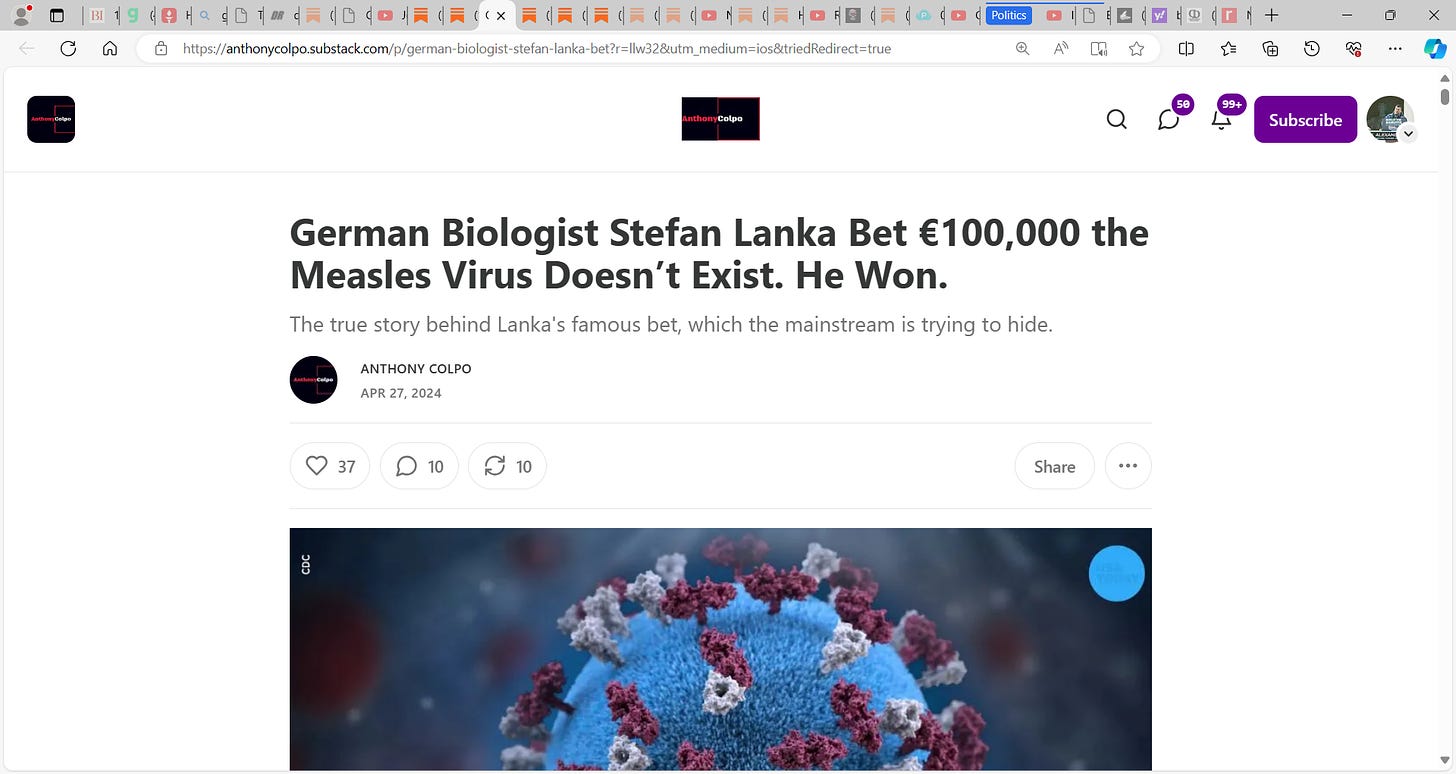
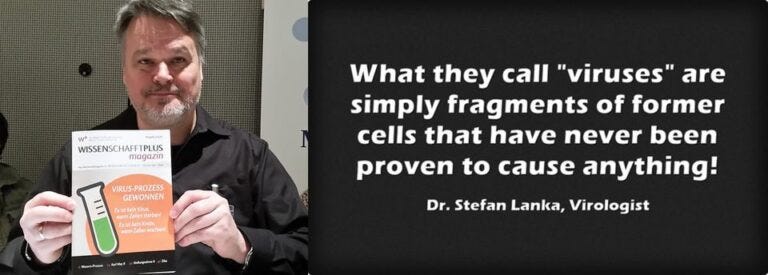
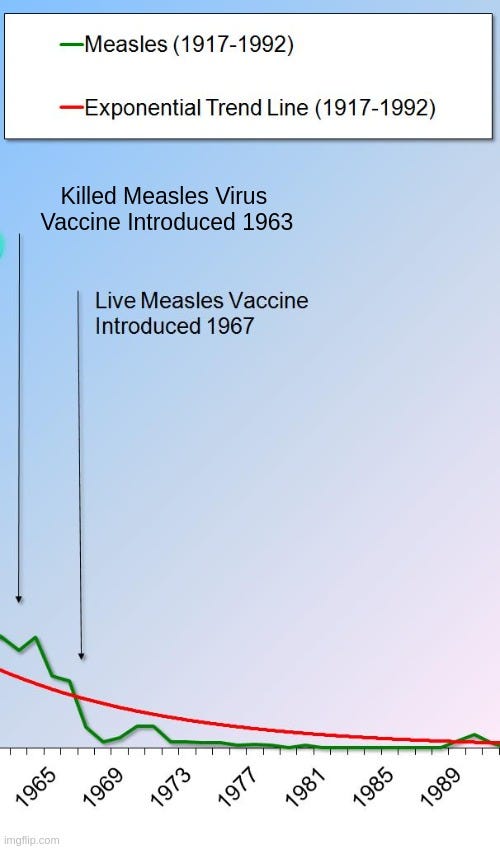
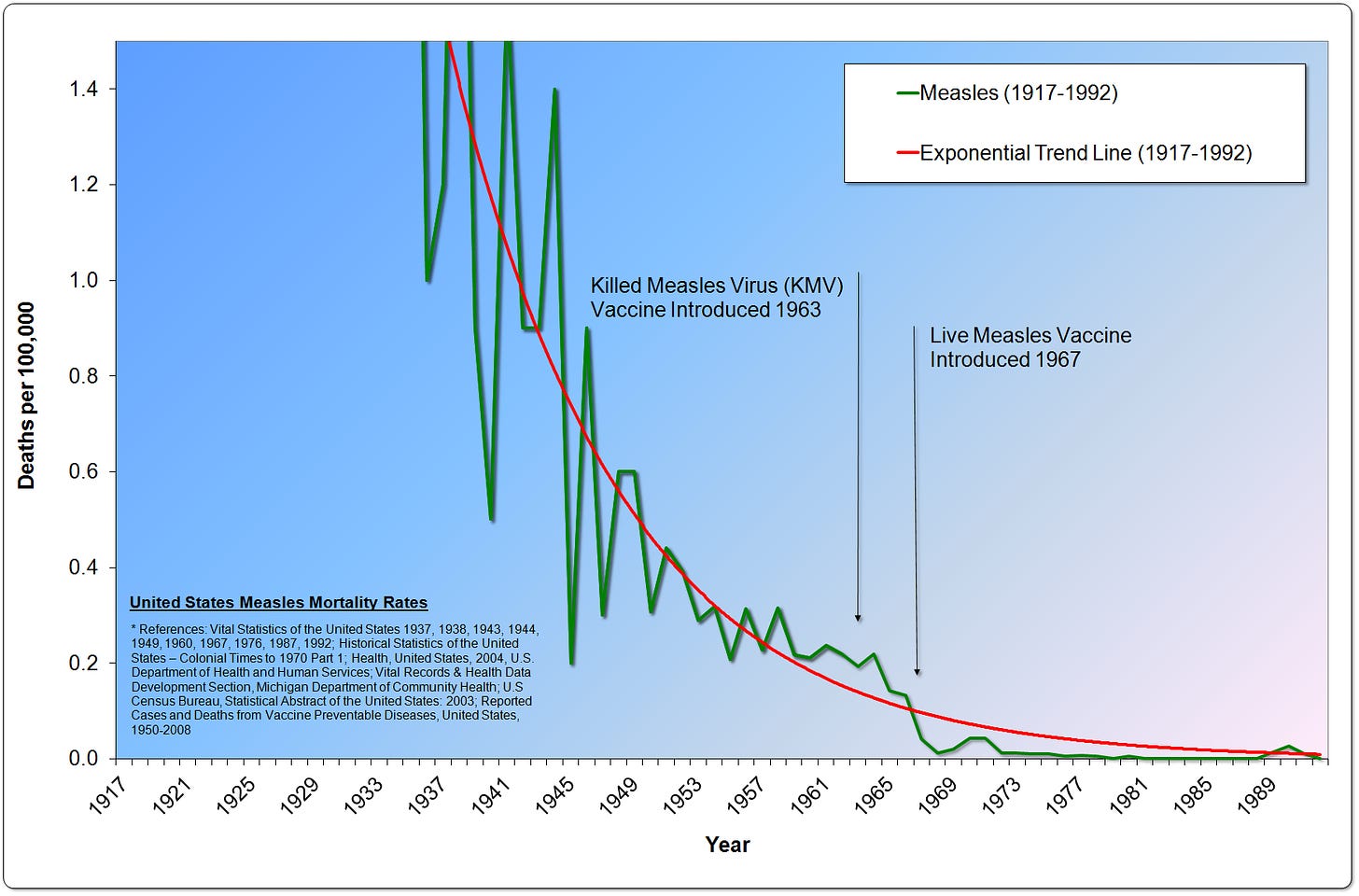
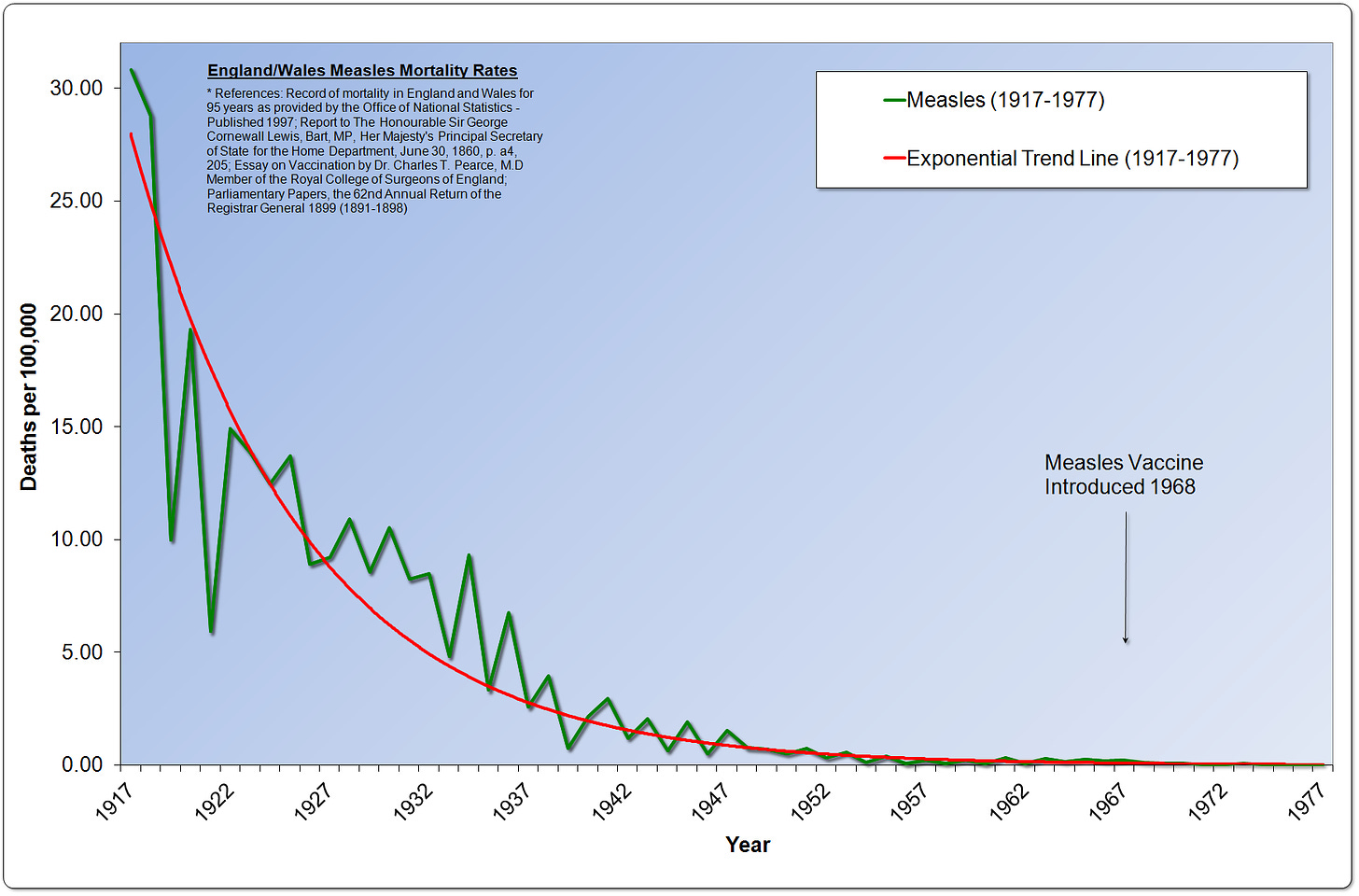
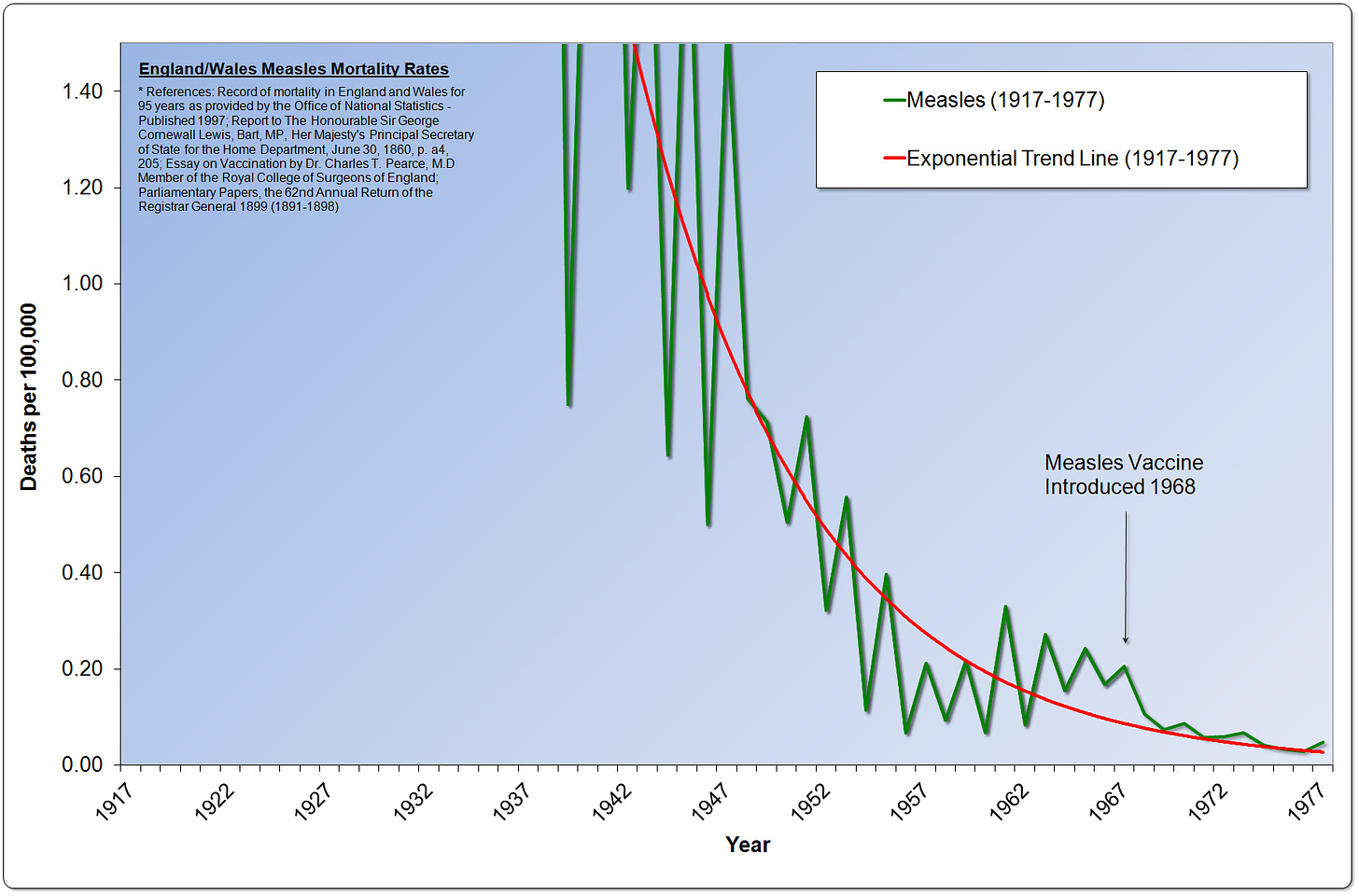
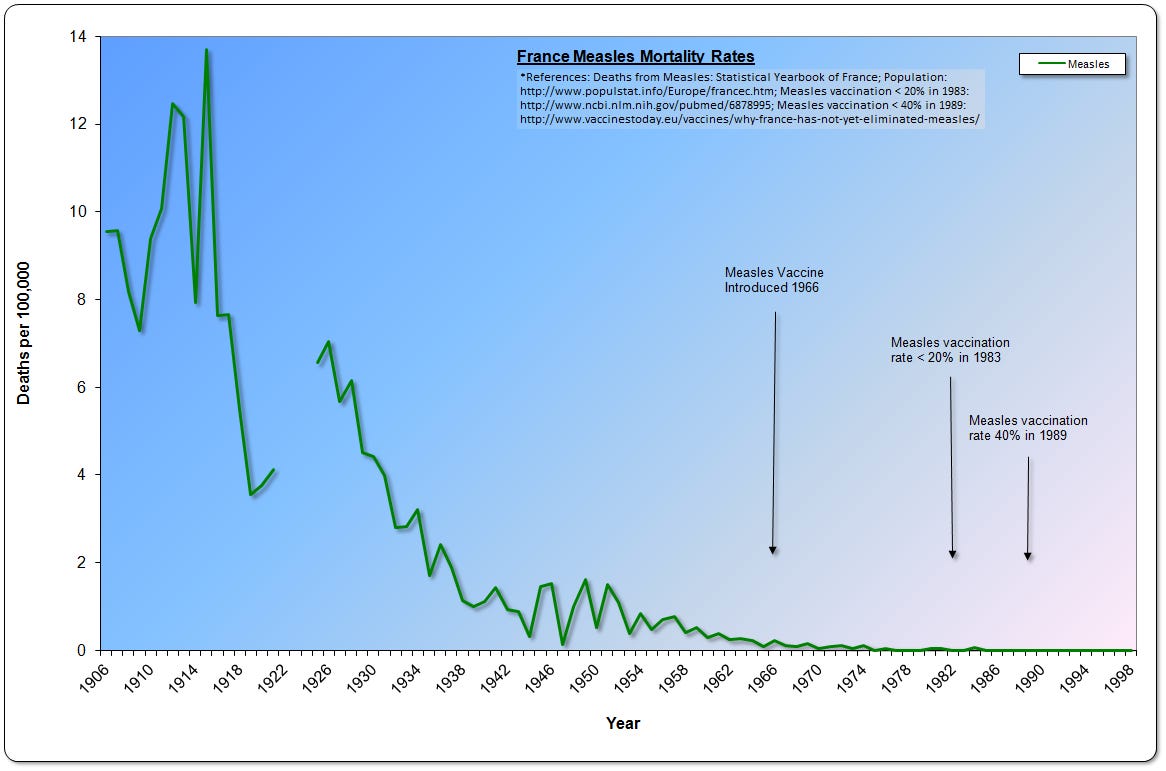
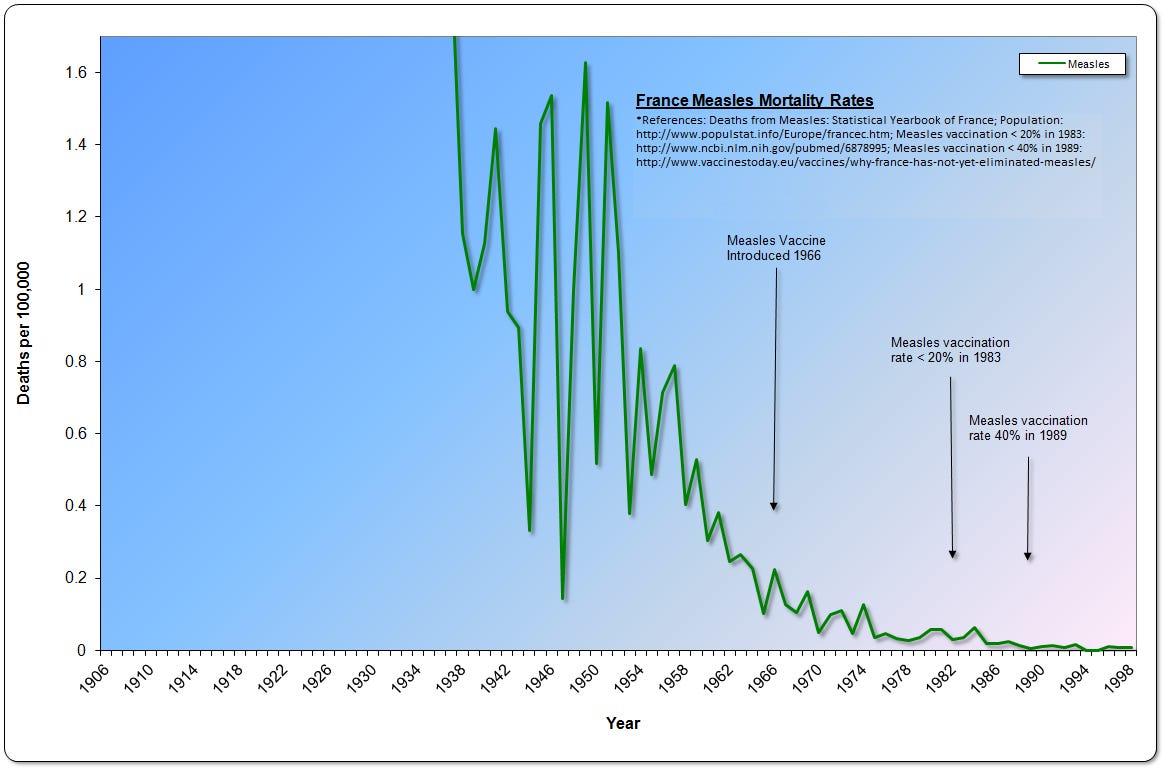
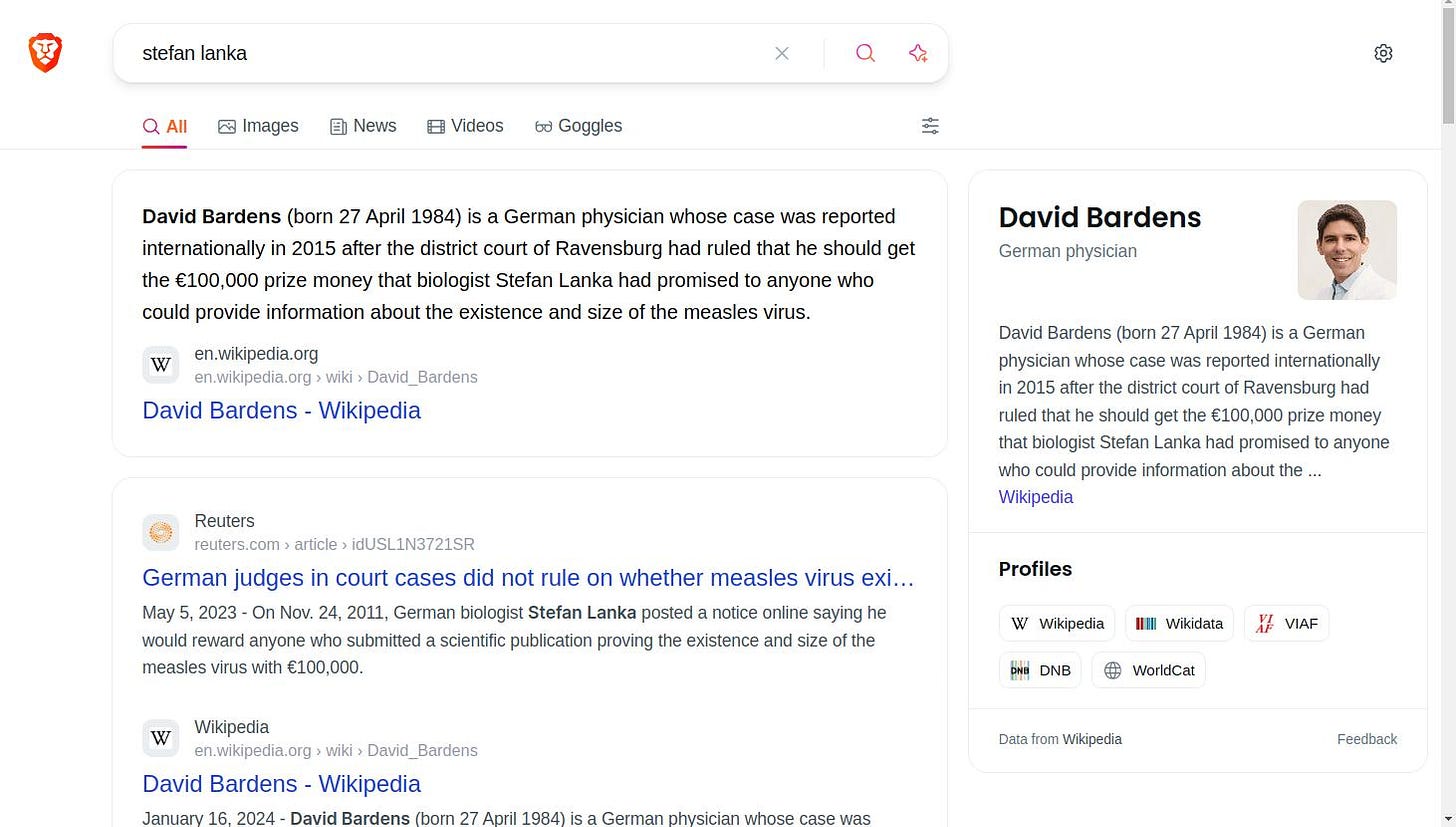
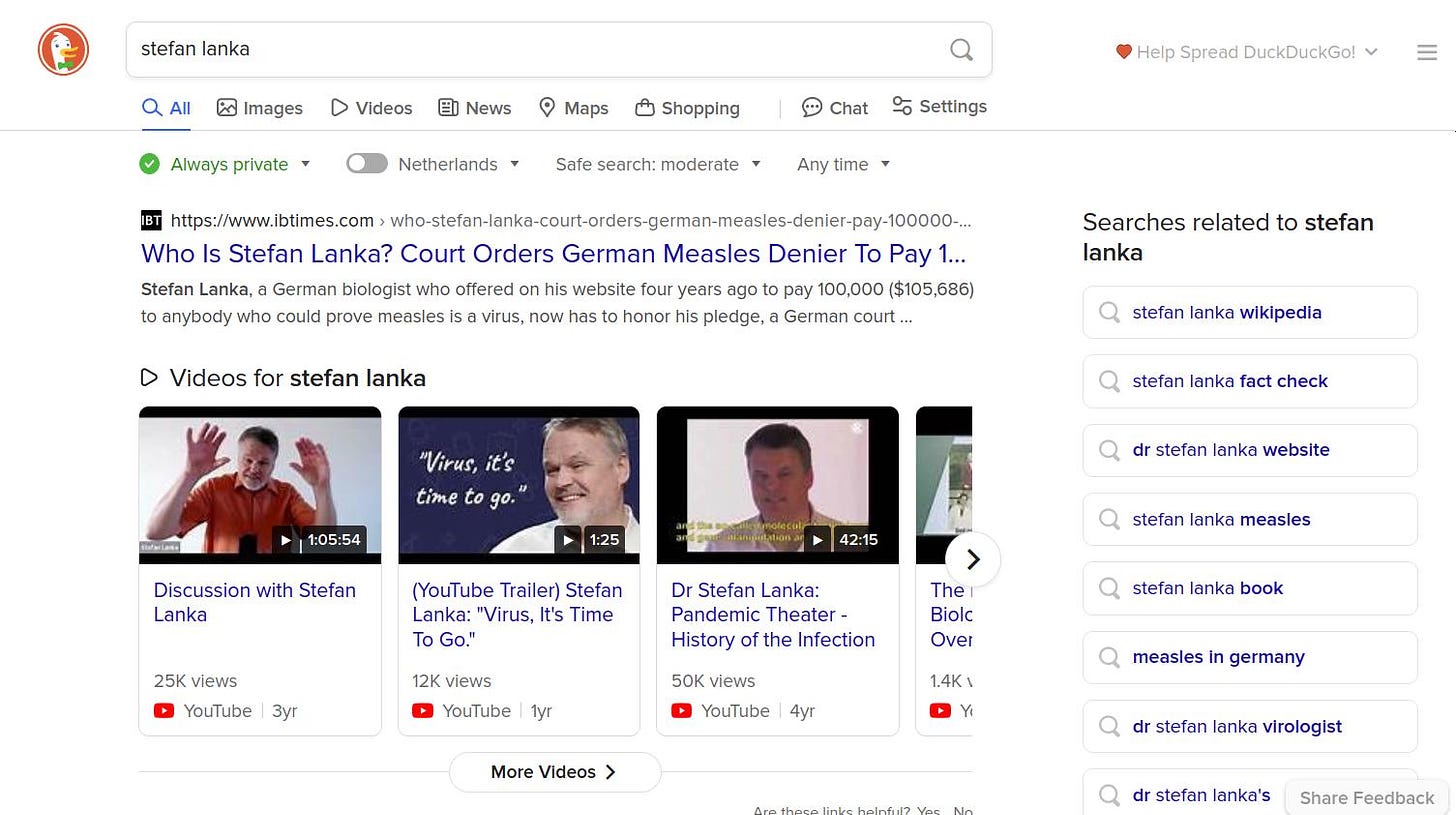

Yandex, Dr. Paul. When Brave disapoints me, Yandex comes through. Which happens increasingly frequently.
Thank you, fantastic and detailed share 😊🙏